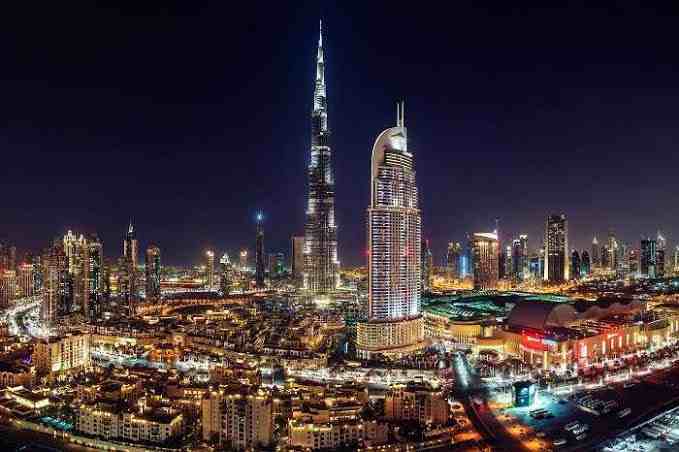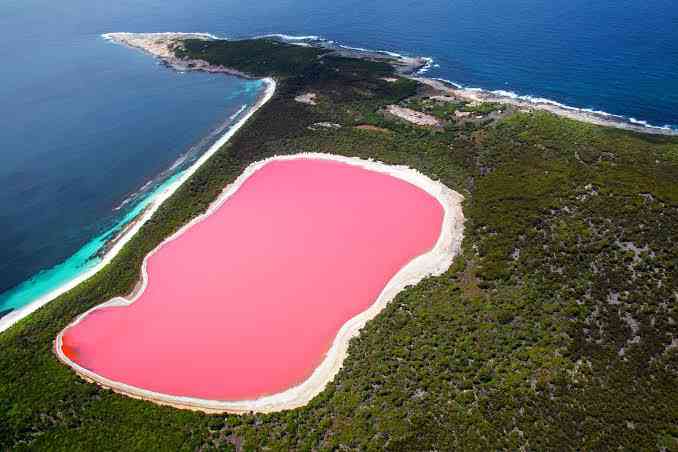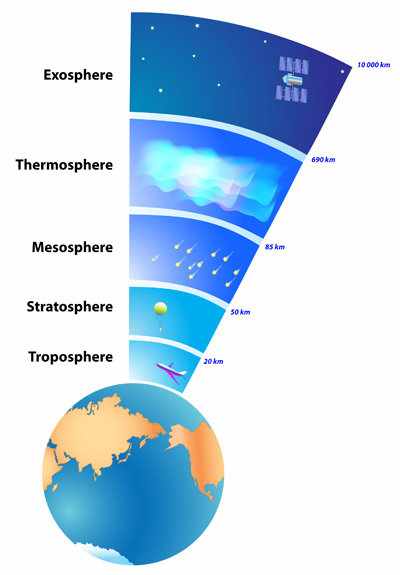 Alfred Ajibola
- 11th February, 2019 @ 08:01 AM
Alfred Ajibola
- 11th February, 2019 @ 08:01 AM
Topics in Geography
Environmental geography explained with its branches Igneous rock explained with its types and textures Characteristics of Igneous Rock What are Sedimentary Rocks? Formation and Types of Sedimentary Rock Characteristics of Sedimentary Rock Types and Characteristics of Metamorphic Rock Physical geography explained with its branches Geography Scheme of Work, SS1, First Term Geography Scheme of Work, SS1, Second Term Geography Scheme of Work, SS1, Third Term Classification and types of planets with their characteristics Planets of the solar system explained with their characteristics Functions of the Atmosphere Layers of the Atmosphere Solar System in Geography Composition of the Atmosphere Human geography explained with its branches What are metamorphic rocks? Formation of metamorphic rock?Academic Questions in Geography
Which of the following is not a branch of environmental geography?
A. Physical Geography
B. Hazards
C. Political Ecology
D. Environmental Perception
E. Landscape Studies
F. Energy and Resource Geography
Sandstone is an example of _____ .
A. Sandy soil
B. Loamy soil
C. Clay soil
D. Igneous rock
E. Sedimentary rock
F. Metamorphic rock
Which of the following isn't an example of metamorphic rock?
A. Schist
B. Quartzite
C. Gabbro
D. Marble
E. Slate
F. Serpentinite
Which of the following statements is false concerning metamorphic rock?
A. The are less dense than igneous and sedimentary rocks
B. They can be foliated or non foliated
C. They are crystalline in nature
D. They have a more coarse texture than their protolith
E. They may be formed from an older metamorphic rock
F. They are characterized with precious metals and stones
Earth's distance from the sun is approximately _____ million kilometers.
A. 147
B. 85
C. 40
D. 220
E. 309
F. 400
Which of the following is not a branch of physical geography?
A. Economic Geography
B. Religious Geography
C. Social Geography
D. Resource Geography
E. Settlement Geography
F. Industrial Geography
Water resource geography is a branch under physiography.
A. True
B. False
With regards to ozone, which of the following is incorrect?
A. Ozone is a triatomic molecule
B. Ozone layer aids in preventing excess ultraviolet radiation from reaching the earth
C. Ozone is a natural greenhouses gas
D. Ozone comprises of oxygen molecules only
E. Ozone layer brings about a global warming on earth
F. Ozone is present in the stratosphere
Geography is a field of study that deals with the scientific study of earth’s surface, our ecosystems and the different environments including the relationship between man and his environment.
Please read on the concept of an ecosystem here.
It is important to study and understand where we dwell as humans since this will help improve our lives. In this regard, geography as an academic subject helps us to comprehend and fit into earth, alongside our diverse environments.
Geography is divided into three main branches or types. These are:
In the article, we shall explain the concept of human geography alongside its branches.
Human geography focuses on the study of human beings, their origin, race, and how they are affected by the earth.
Human geography can be divided into the following branches:
Instances of economic geography include a study or research done on the richest nations on earth. Through this research, the processes accounting for their wealth are ascertained.
Please read on the definition and scope of commerce here.
Instances of religious geography include the study of the christian or islamic religion as seen in documentaries.
Please read on the early years of Jesus here.
As an instance, you may have heard about the geographical study and distribution of the diseases 'ebola' and 'COVID-19'. In this instance, ebola and COVID-19 are case studies of two different viral diseases.
You can read on micro-organisms causing food, water and air borne diseases here.
Social geography is divided into political geography and population geography.
Please read on social studies and its objectives here.
Political Geography: This branch of social geography deals with the study of political units, nations and how they are bordered; including the behaviors within such nation’s geographical setting.
Please read on democracy and types of democracy here.
Population Geography: This branch of social geography deals with the study of human demographics and distribution.
Human race, origin, composition, mortality, fertility, population and migration are all covered under population geography.
Other branches of human geography include:
Urban Geography
Historical Geography
Transportation Geography
Industrial Geography
Agricultural | Land Use Geography
Behavioral Geography
Regional Development and Planning
Kindly share this article via the links below:

Please click here to contact Alfred if you require any of the following services:
If you need a standard website at an affordable price.
Online training on the academic subjects: biology, chemistry and basic science.
If you require an advanced smart school management system (web application) for your school.
Click here to read on Len Academy Smart School Software.
Please click here to follow Len Academy on Google News.
Please Register here or Login here to contribute to this topic by commenting in the box below.
Amazing facts in Geography

Lake Baikal is the deepest freshwater lake in the world. It is located in Siberia, and has a depth of 5,315 feet (1,620 meters)
River Nile is the world's longest river, reaching a length of 6,853km. It runs through the borders of 11 African countries. These are Egypt, Sudan, South Sudan, Ethiopia, Uganda, Democratic Republic of the Congo, Kenya, Tanzania, Rwanda, Burundi and Eritrea
The deepest place on Earth is the Mariana Trench in the Pacific Ocean. It has a dept of 11,034 meters (or 36,201 feet)
Japan has recorded the most earthquakes and is thereby considered as the world's most earthquake-prone country
The planets Jupiter, Saturn, Uranus and Neptune have no solid surfaces, but are rather made up of gases. For this reason, humans can never stand on them

Burg Khalifa is the tallest building in the world (as at 2023). It is situated in Dubai and stands at over 2,700 feet
Pepto Bismol-colored Lake Hillier is a pink colored lake present in Australia

Mount Everest is the highest point on earth with a height of 8,849 meters (29,032 feet). It is located between Nepal and Tibet, an autonomous region of China.
Mountain Everest is a symbol of relationship between Nepal and Tibet, and was named in the nineteenth century after George Everest, a former Surveyor General of India
A day on planet venus is longer than a year. This is so because it takes venus 243 'earth days' to spin round its axis (rotation), but takes 225 'earth days' to go around the sun (revolution).
In geography, understand that a day is reached when the planet makes a full spin or rotation round it's axis. However, a year is reached when a planet revolves fully around the sun
The Four Corners is a location in the United States of Ameria where one can stand in four states simultaneously (at the same time). The states are: Utah, Colorado, Arizona and New Mexico.
On the Four Corners, a person stands on the southwestern corner of Colorado, southeastern corner of Utah, northeastern corner of Arizona, and northwestern corner of New Mexico at once.
Notable points in Geography
Planets can be categorized based on their composition. These include:
1. Terrestrial or Rocky Planets: They are mercury, venus, earth and mars. They are called terrestrial or rocky planets for the following reasons:
They have a rocky and compact surface.
They have no rings around them.
They have a few natural satellites.
They rotate slowly around their axis.
2. Gas or Jovian Planets: They include jupiter, saturn, uranus and neptune. They have the following features:
They are called jovian planets because they are bigger in size when compared to earth.
They are composed mainly of hydrogen and helium gas, hence the name 'gas planets' or 'gas giants'.
They rotate rapidly.
They have many satellites.
They have rings around them.

The following rules are required for a body to become classified (or regarded) as a planet:
It must orbit the sun.
It does not orbit another planet. This means that it must not be a satellite.
It must have sufficient mass which accounts for its self-gravity.
It must assume a nearly round shape.
Earth's atmosphere is extremely important for the survival of all its inhabitants. As a student, it is important you comprehend how the above functions of the atmosphere support life. The explanations below give credence to this fact.
When one moves further away from earth, the atmosphere becomes thinner until it disappears into the outer space. There is no atmosphere in space. For this reason, astronauts will always wear a spacesuit while carrying along their oxygen gas masks and canisters when in space.
People living on very high altitudes will likely experience a reduced amount of oxygen in the atmosphere. Such people survive because their bodily organs become adapted to survive in such conditions.
On mountain everest for instance, mountain climbers will need to carry oxygen canisters because lesser amount of oxygen is present on this mountain.
The interface forming the boundary between two atmospheric layers are always named with a 'pause' at its end; for instance;
Tropopause: This is the interface or boundary between the troposphere and stratosphere.
Stratopause: Interface between the stratosphere and mesosphere.
Mesopause: Interface between the mesosphere and ionosphere.
Ionopause: Interface between the ionosphere and thermosphere.
The atmosphere surrounding the earth is layered. Each layer has its own characteristics although the boundaries between them are not clearly defined.
The image below shows the different layers of the atmosphere:
